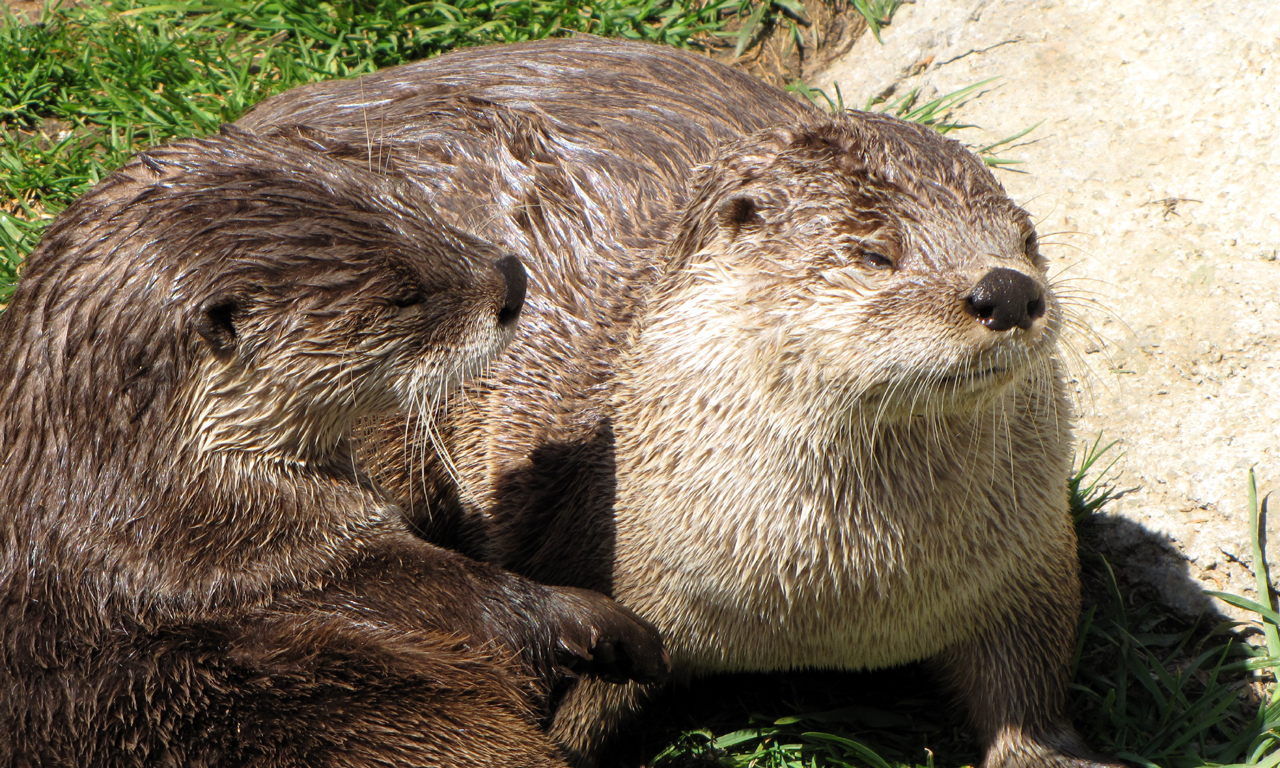Cute, furry, clever and recovering from near extinction – the surprising lives of otters
29 May 2019
Onced hunted to near extinction for their fur, research has revealed incredible otters are adept tool users and vital to marine ecosystems.
Otters are found on every continent except Australia and Antarctica. There are 13 species ranging from the Asian small-clawed otter to the giant river otter of South America.
Though most live in freshwater rivers, lakes, and wetlands, the sea otter and the smaller marine otter are found in the Pacific Ocean.
Most otter species are small, with short ears and noses, elongated bodies, long tails, and soft, dense fur. They have very specific physical adaptations which help them to thrive within their natural environment including webbed feet and powerful tails which make them very strong swimmers.
Their nostrils and ears close to keep water out, and waterproof fur keeps them warm. In fact, otters have the densest fur of any animal, with as many as a million hairs per square inch in places.
Sadly, this incredible fur once made them a target for industry to such a degree that many were hunted to near extinction.
Otters themselves are expert hunters feeding on fish and crustaceans, and now researchers have discovered that sea otters have an ingenious method of opening shellfish.
A sea otter may float on its back, place a rock on its chest, then smash the mollusk down on it until it breaks open, or they will smash mollusks against rocks either under the water or at the water’s edge. Individuals even have preferred rocks which they use consistently.
An analysis of discarded mussel shells has shown consistent cracks along the same side suggesting that most otters are in fact right-handed. It was previously thought that only great apes and humans had a preferred hand, but recent research has expanded this to many other animals including sea otters.
The use of tools by otters is very significant as tool use has been found among only a few marine animals, including dolphins, which use sponges to protect their beaks while hunting fish in coral – and possibly also as love tokens.
Like sea otters, tusk fish also smash any hard-shelled prey such as sea urchins against their favorite stationary stones.
Tools use in sea otters appears to be an innate behaviour in all young individuals. Orphaned otter pups raised in captivity exhibit rudimentary pounding behaviour without training or previous experience, and wild pups develop tool use behaviour before weaning regardless of their mother's diet type and feeding behaviours.
While regulations now exist to protect otters from human hunters, many species remain at risk due to pollution and habitat loss.
In fact, sea otters remain listed as endangered on the IUCN Red List with many still persecuted by the fishing industry for competing for fish stocks.
Sea otters are considered a keystone species because of their critical importance to the health and stability of the nearshore marine ecosystem.
They eat sea urchins and other invertebrates that graze on giant kelp which ensures kelp forests are not destroyed. This service is vital to maintaining an ecosystem necessary to the survival of a wide diversity of animals
Kelp forests are also hugely important to human populations by protecting coastlines from storm surges and absorbing vast amounts of harmful carbon dioxide from the atmosphere.
BACK





